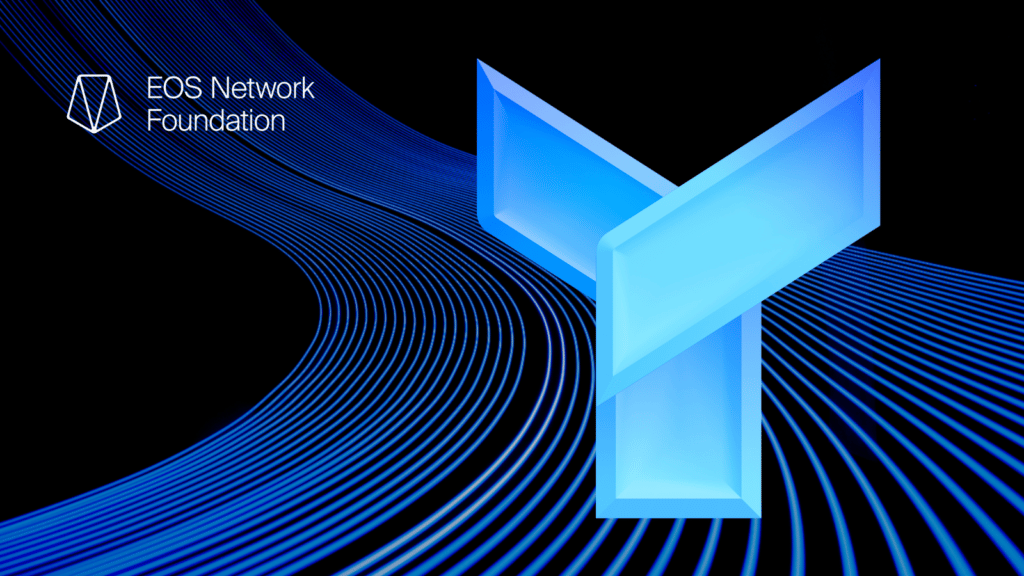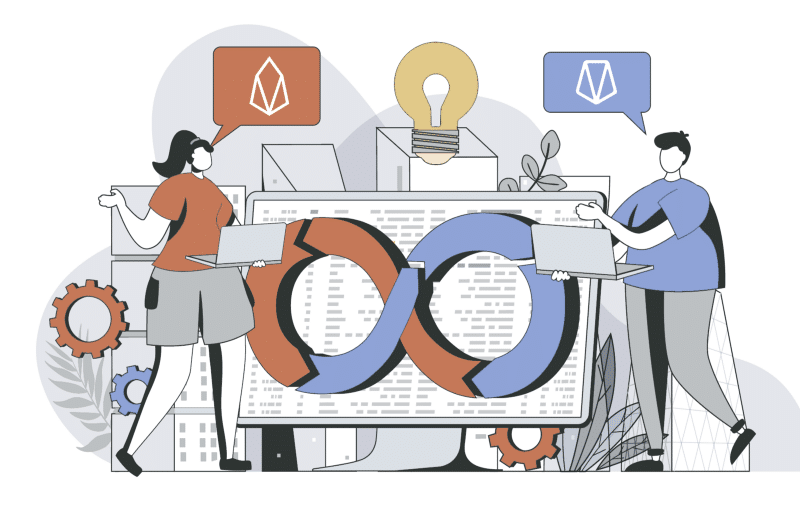EOS Network Foundation
Pomelo as a Mechanism for Funding Public Goods
EOS is about to demonstrate its truly sustainable and decentralized model for building public goods for the open web. Open Source Software (OSS) is a public good and its funding is one of the information age’s most critical, yet unsolved coordination problems.
Through direct investments, sponsored working groups, Eden(s), and Pomelo, the ENF is strategically taking a multi-pronged approach to allow us to all work together as a unified EOS community to create positive sum games that will lead to EOS maturing into the best-in-class blockchain ecosystem that we’ve always expected it to become.
What is a Public Good?
In economic parlance, a “public good” refers to anything that is both non-excludable and non-rivalrous. When something is non-excludable, it means that it would be extremely difficult to stop someone from using the good, such as clean water, roads, or public parks. Non-rivalrous means that it is abundant and that one person’s use of the good doesn’t substantially reduce the amount left for someone else. For example, if a country has clean air, it cannot stop some of its citizens from breathing it and a citizen breathing clean air doesn’t take away air from another citizen, so therefore, the cost of providing clean clean air to one of its citizens is the same as providing it to all of them. Public goods are critical for a society to thrive as they set the underlying infrastructure that enables others to expand and grow upon.

Public goods are notoriously underfunded due to their difficulty in capturing value compared to private goods. Free markets work well for private goods because they’re excludable and rivalrous nature means that those who pay for them get to enjoy the benefits from them and those who don’t do not.
Public goods have weak value capture mechanics because even after funding their creation with time and/or money, anyone else can then take advantage of it as well. This creates a positive externality, also referred to as a “free rider” problem, in which a person can take advantage of a public good without ever paying for it. Additionally, if a market price were to reflect the cost of producing certain public goods, it would be too high compared to the benefit provided to any single individual. For example, having to finance and construct your own road so that you can commute between two towns to get to work everyday would be very unlikely to ever pay itself off during a single person’s lifetime.

In everyday society, public goods are often funded by sovereign institutes that rely on their citizens’ trust in the governing body to enable a collective pooling of resources to aid the community as a whole. Governments collect taxes and use those taxes to build roads, subsidize healthcare or fund education. The core idea behind such systems is that public goods can be managed more efficiently when resources are pooled rather than exploited individually.
EOS has gone through different stages of development since its launch in June 2018. At first, most of the funding that was made available on-chain was sent to entities (BPs) to deploy and use as they wished. We saw a growth phase where tools, applications and communities were created, but this decentralized funding mechanism lacked coordination to do “big things” and had very little embedded accountability.
The network then organically shifted the pendulum in the opposite direction and essentially shifted funding away from those entities back to token holders directly. This period saw stagnation in the development of tools and communities, but also strengthened the underlying security of the network as we saw a massive increase in the percentage of the network’s tokens that began staking.
We’re now entering a third phase where the pendulum once again begins to swing the other way, but in a controlled and overseen manner. Centralization born out of decentralization.
Public Goods on EOS
There are many things that we can all agree we want and need for EOS that would significantly improve the entire ecosystem, but nevertheless they’ve remained underfunded, or even worse, not funded at all. Improvements to UX/UI for better user onboarding, resource management, developer tooling, more robust APIs and history solutions, marketing, and educational materials are all examples of areas of improvement that we’ve always known are needed for EOS to thrive, but yet they’ve continued to lack the financial support required for that to happen.
These could all be considered public goods within the EOS ecosystem as they are non-excludable and non-rivalrous. As a result, the costs required to implement such solutions are very unlikely to cover the costs of creating them in the first place. It cannot, therefore, be provided via market mechanisms and instead requires subsidies from an alternative funding mechanism that can support public goods.
So who is responsible within EOS for funding the public goods equivalent of bridges, electrical grids, libraries, and public access media? Who will build the roads?
The EOS community’s inability to fund our most critical public goods has been due to the lack of two key components which had been absent until recently: coordination and pooled resources. EOS is the only high market cap chain that has a Foundation born out of decentralization and that is fully accountable to the network itself. The efficiency with which it will be, and already is, able to allocate and coordinate funding towards public goods is what is most needed to support the EOS ecosystem development at this stage. Funding developers, businesses and individuals to build on EOS, but in an accountable and transparent manner will bring about even more benefits than what we saw in the first chapter of EOS, while ensuring the funds are deployed in a strategic and coordinated fashion.
Pomelo as a Mechanism for Funding Public Goods
Pomelo is an open-source platform that will become a self-funded, community-driven portal designed to fund EOS-based projects using a quadratic funding mechanism. Quadratic Funding (QF), which was first introduced by Vitalik Buterin and has been adopted by Gitcoin and clr.fund on Ethereum, has proven to be the mathematically optimal way for funding public goods in a democratic community where the number of contributors matters more than the actual amount funded. Pomelo is the EOS equivalent of Gitcoin for funding public goods within the EOS ecosystem.
At the core of quadratic funding is its matching pool. A matching pool is a pool of money that is funded by the matching partners like the EOS Network Foundation (ENF). Matching partners are companies, individuals or even protocols supporting public goods projects. The funds collected in the matching pool are then used to magnify individual donations to grant proposals by using the quadratic funding formula where the amount received by the project is proportional to the square of the sum of the square roots of contributions received.

In more simple terms, this means that quadratic funding creates amazing incentives for smaller contributors over the bigger ones. An individual supporting a project would see diminishing returns on bigger contributions, with the small contributions getting the highest matches percentage-wise. To better understand the concept of quadratic funding, see the example below.

EOS Network Foundation as a Pomelo Matching Pool Partner
The launch of Pomelo is imminent and the ENF is committed as a matching pool partner to ensure its success in supporting developers, businesses and individuals to grow and mature the EOS ecosystem.
The ENF made a formal commitment to donate $500,000 to the first season of Pomelo. This capital will be distributed across all proposals made using the quadratic formula to allow the EOS token holders themselves to dictate how the public goods funding is to be allocated rather than the ENF itself. The ENF will continue to focus on high level, high impact initiatives while empowering the EOS community to also work independently towards a unified vision. We are steadfast in our commitment to increase our contributions over time as the system matures and attack vectors are minimized after each iteration.
The #ENF is making a formal commitment to donate $500,000 as a grant matching partner to #Pomelo's genesis grant round!
Contributing to the funding of public goods that benefit the wider #EOS ecosystem is one of the core pillars of the #EOSFoundation. This is only the beginning! pic.twitter.com/8eFRlwtLaf
— Yves La Rose (@BigBeardSamurai) October 23, 2021
The results from each season of Pomelo will assist in once again making EOS a thriving ecosystem. I cannot wait to see what the community comes up with in their proposals. To help generate some ideas, I’d like to share a few examples of successful projects within the Ethereum ecosystem whose success was made possible by quadratic funding:
- Bankless — Newsletter, Podcast, and YouTube channel that educates the blockchain ecosystem and was able to grow its email subscriber base to 30,000 thanks to the support from Gitcoin QF.
- EthHub — Fundamentals-focused, open source, community-driven Ethereum research and resources hub that aims to educate the Ethereum ecosystem.
- OpenEthereum (ex-Parity client) — Community project building the Ethereum client on Rust.
- ArchiveNode.io — Free service provided where developers are provided with free access to Ethereum archive nodes.
- Ethereum Magicians — The Fellowship of Ethereum Magicians is a community of Ethereum contributors who help move the protocol and related tech forward, facilitate communications among developers and teams in the wider community. Examples include developing smart contract standards for NFTs, DeFi, and L2s through coordinating with Ethereum core devs, dApp devs, researchers, and other stakeholders on proposed solutions.
I hope to see similar proposals being made to Pomelo. These are just a small handful of great examples of public goods and I highly recommend everyone who is planning to apply for funding on Pomelo to do their own research on Gitcoin.
By its design, quadratic funding incentivizes every member of the community to fund the public goods they want to see in direct proportion to how useful they think it will be to themselves and the community. With Season 1 of Pomelo right around the corner, I cannot wait to see what the community comes up with in their proposals to deliver on public goods for the EOS ecosystem.
EOS is rapidly becoming an ecosystem full of limitless opportunities and the EOS comeback story is building up to become one for the ages!
-Yves
EOS Network
The EOS Network is a 3rd generation blockchain platform powered by the EOS VM, a low-latency, highly performant, and extensible WebAssembly engine for deterministic execution of near feeless transactions; purpose-built for enabling optimal web3 user and developer experiences. EOS is the flagship blockchain and financial center of the EOSIO protocol, serving as the driving force behind multi-chain collaboration and public goods funding for tools and infrastructure through the EOS Network Foundation (ENF).
EOS Network Foundation
The EOS Network Foundation (ENF) is a not-for-profit organization that coordinates financial and non-financial support to encourage the growth and development of the EOS Network. The ENF is the hub of the EOS Network, harnessing the power of decentralization as a force for positive global change to chart a coordinated future for EOS.



